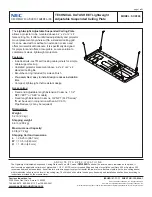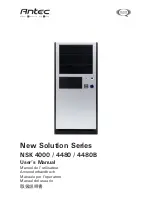
M
ASTERING
Y
OUR
BERNINA
®
1/10/02
activa
125/135 PE/145/
6
BERNINA
®
activa
125/135 PE/145
M
ASTERING
Y
OUR
BERNINA
®
THREADS
Poor quality or the wrong type of thread can cause poor stitches on any machine. Thread passes through
the eye of the needle approximately 37 times in a “see-saw” action before it forms a single stitch. Poor
quality thread results in crooked and looped stitches, puckered seams, frayed thread, and/or needle
breakage. To achieve quality stitches, a sewing machine needs three things: correct thread, correct size
needle, and properly adjusted thread tensions.
Several factors such as the fiber, twist, ply, finish, and size of thread must be considered for use with today’s
fabrics for fine stitches.
Staple
– refers to the length of fibers used to twist together to form a single ply. Domestic thread
fiber lengths are usually 1½” to 2½” long while European threads use 5½” to 6½” lengths.
Ply
– the number of single strands twisted together to make a single thread.
Roll
– the tendency of thread to roll to the right or left during stitching, causing the stitch to
appear slightly crooked. Poor quality threads are more likely to roll.
Twist
– the crimping of fibers which causes them to interlock firmly into a single ply. Thread should
not untwist during stitching. This will cause skipped stitches, thread breakage, crooked stitches, and
weak spots in seams.
Right twist
– most American threads are twisted to the right, causing some rolling.
This gives average stitch quality.
Left twist
– Most commercial and imported threads are twisted to the left, giving better
than average stitch quality. Left twist resists rolling and makes a larger loop for the hook
point to enter, reducing skipped stitches.
Wearable art embellishment has necessitated the creation and marketing of many new thread types, such
as Sulky’s rayons and metallics. Made in West Germany, these are left twist threads; Mettler and Isacord
threads are also left twist. To test the twist of a thread: while holding the spool in the left hand, roll the strand
of thread towards you with one thumb. Left twist will tighten, right twist will loosen.
Fiber
– refers to the typ eof material used to produce the thread. Some commonly used threads:
•
Polyester 2 ply
– such as Metrosene 100. Good for clothing construction on man-made,
natural or blended fabrics. Will tolerate heat up to 450° Fahrenheit. Also Isacord
embroidery thread – excellent for embroidery, very abrasion resistant.
•
Polyester 3 ply cordonnet
– topstitching or buttonhole twist – such as Mettler 30/3.
•
Cotton 2 ply
– such as Mettler 60/2 – excellent for French Machine Sewing, delicate
machine embroidery, and darning.
•
Cotton 2 ply
– such as Mettler 30/2 – loose twist for a soft, shiny look in machine
embroidery, applique, and buttonholes.
•
Cotton 3 ply
– such as Mettler 50/3 – excellent for clothing construction on natural fibers.
Tighter twist than embroidery cotton thread and less puckering on problem fabrics. Cotton
thread stretches less than polyester.
•
Rayon
– a lustrous embroidery thread. Weaker than cotton, it is used for decorative work only.







































